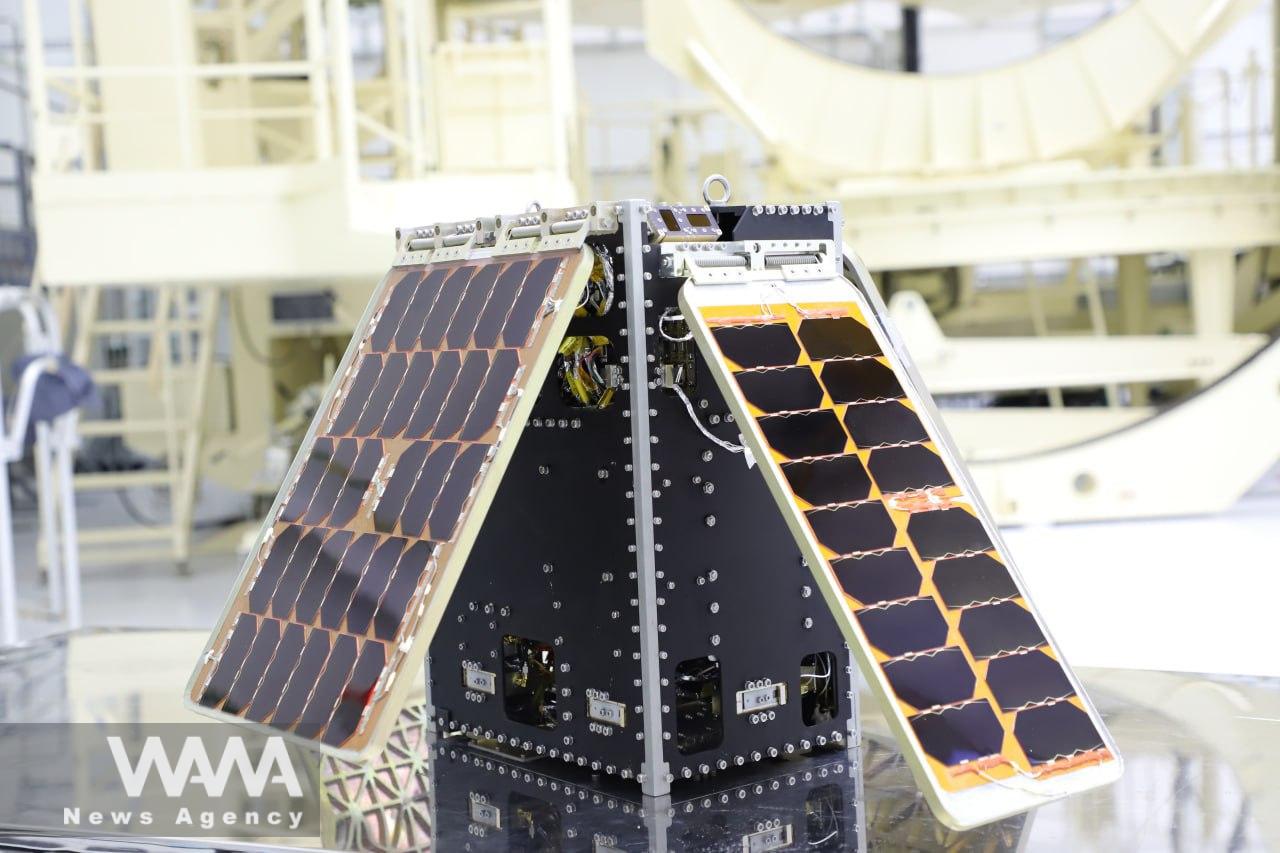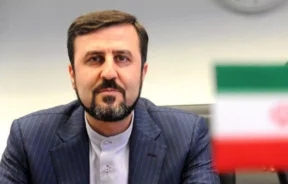Successful Launch of Iranian Satellites “Hodhod” and “Kosar” to a 500-kilometer Orbit
WANA (Nov 05) – On the morning of Tuesday, November 5, two Iranian satellites, “Hodhod” and “Kosar,” were successfully launched into a 500-kilometer sun-synchronous orbit from Russia’s Vostochny Cosmodrome using a Soyuz rocket. Both satellites aim to support a wide range of scientific and practical applications.
Features of the Kosar Satellite
The Kosar satellite, weighing 30 kilograms with a cubic design, is built for applications such as precision agriculture and mapping. Equipped with cameras that provide a resolution of 3.45 meters GSD in NIR and RGB spectrums, the cubic structure of Kosar allows for cost and production time efficiency. The satellite has an image capture rate of six frames per second and an estimated orbital lifespan of 3.5 years.

Kowsar and Hodhod satellite preparation, Social media/ WANA News Agency
Hodhod Satellite and its IoT Mission
Hodhod is a CubeSat weighing around 4 kilograms, primarily designed to provide narrowband Internet of Things (IoT) services. With the ability to integrate global IoT services and cover remote, forested, and mountainous regions, Hodhod is expected to play a significant role in agriculture, transportation, and environmental management.
One of Hodhod’s team members highlighted the satellite’s ability to store and transmit messages to ground users, along with its navigation capabilities. The team aims to build a constellation of satellites in the future and connect agricultural drones to the satellites to aid in natural resource management.

Iran Prepares to Launch Two Domestically Produced Satellites from Russia
WANA (Nov 02) – Iran is set to launch two domestically produced satellites, “Kowsar” and “Hodhod,” developed by the country’s private sector, into orbit from Russia’s Vostochny Cosmodrome on November 5. These satellites, marking Iran’s first private-sector satellite projects, represent a milestone in the country’s growing space industry. The Kowsar and Hodhod satellites will […]
Announcement of Launch Success and Satellite Performance
Following the confirmation of the successful launch and separation of the satellites from the rocket, it was announced that this achievement demonstrates the proper functioning of launch systems and satellite containment structures. Initial signals have been received from the satellites, and it is expected that communication and other defined missions will proceed successfully in the coming phases.
Importance of this Success in Expanding Space Cooperation
This launch was part of an effort to strengthen international cooperation and leverage external resources, aiming to reduce space project costs and foster broader international collaboration.

From Earth to Space: Iran’s Journey in Remote Sensing and Satellite Technology
WANA (Nov 03) – Over the past two decades, Iran has made significant strides in remote sensing by developing and launching multiple satellites, including “Mesbah,” “Sina,” “Fajr,” “Payam,” “Khayyam,” “Navid,” “Zafar,” and “Tolou.” These satellites have become crucial tools for space-based observation and data collection, playing a vital role in natural resource management, environmental […]











